Definition: A Quantizer is a device that changes the sampled input signal into quantized signal that has some predetermined fixed voltage levels. The level of the quantizer depends on the encoder. As the bit value of encoder decides the quantization level.
Suppose in the circuit has the 2-bit encoder, then n will be 2. Thus the quantization level will be given as
2n = 22 = 4
This shows that the quantizer will have 4 quantization levels. And so the sampled value will be quantized in these 4 levels.
What is Quantization?
Quantization is nothing but the process of approximating or rounding off any value to a certain specified level.
The sampled signal generated from the sampler is fed to the quantizer in order to have quantized signal having fixed predetermined levels.
Basically, quantization is done so as to have the approximated digitized value of analog signal.
Quantization of Analog signal
The quantizer is widely used in systems where analog to digital conversion is needed. As by the process of quantization, the discrete value of analog sample can be easily achieved.
The figure below represents an analog signal, that is required to be converted into a digital signal by making use of quantizer:
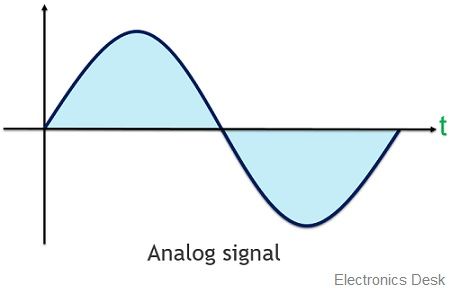
The maximum amplitude of analog signal will be equivalent to the maximum amplitude of the sampled signal.
As we have already discussed that the level of quantization depends on the bit level of the encoder.
The figure below represents the sampling of analog signal:
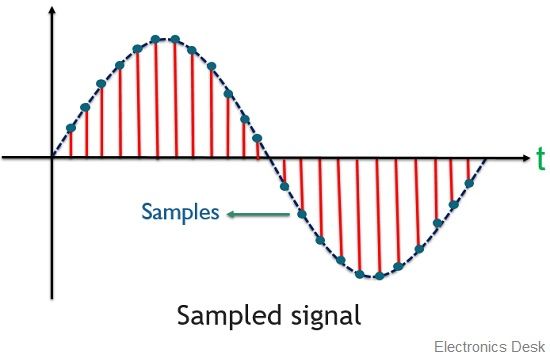
The figure below illustrates the process of quantization of analog signal:
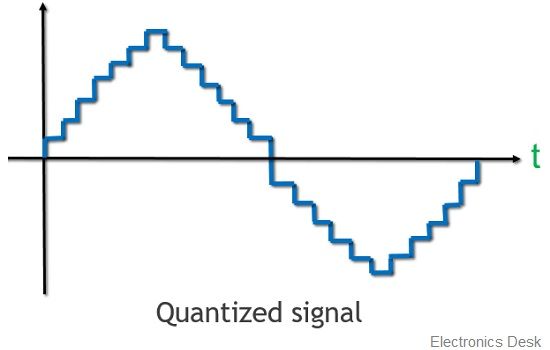
Here, the quantization of the signal is done up to its nearest quantized value.
Suppose if the at the time of sampling, one of the sampled value of analog signal is 1.2. Then this sampled value will be quantized to level 1. Thus we can say that the sampled signal is rounded off to its nearest value.
This difference in the value of quantized value and sampled value of analog signal is known as quantization error.
It is given by:
Quantization Error = Quantized signal – Input signal
There is a drawback of converting a sampled value in quantized form, because, by doing so, some of the information content present in the analog signal gets lost. This is because basically rounding off leads to some errors
As we have seen in the above figure that the continuous amplitude signal is converted to a discrete time signal.
Usually, the step size is represented by Δ, which is nothing but the space between the two quantized levels.
Types of Quantization
The quantization performed by a quantizer is basically of two types:
Uniform Quantization
It is also known as linear quantization in which, the step size for the complete discrete signal will be equal. Or we can say that the space between two quantized levels remains the same for the complete discrete signal.
Uniform quantization is further classified into 2 categories:
Midtread Quantization: In midtread quantization, the origin is present at the centre or mid-region of the tread of the graph of staircase pattern. Thus it is called so.
The figure below shows the characteristic of the midtread quantized waveform:

Midrise Quantization: In case of midrise quantization, the origin of the graph is present at the mid of the rising part of the staircase pattern.
The figure here represents the midrise quantized waveform:
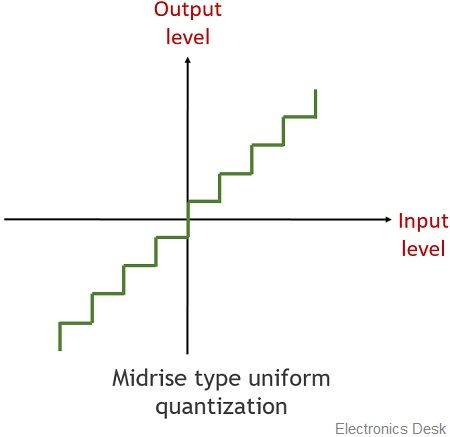
Non-Uniform Quantization
Non-uniform quantizer shows different behaviour than uniform quantizer, as here, the step size of the quantized signal is not constant and shows variation. The step size, in this case, is not the same through the discrete signal. It is also known as non-linear quantization.
Basically, the variation in the step size is according to the applied ac input signal.
The figure below represents the non-uniform quantized signal:
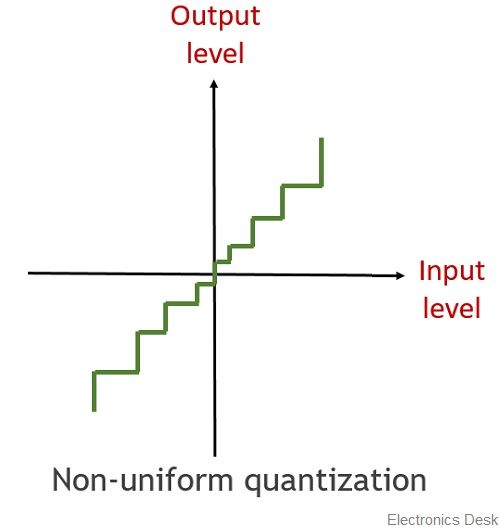
In non-uniform quantization, when the amplitude of the input signal is low, then the quantization levels will be more i.e., showing the small step sizes. While, when the amplitude of the output signal is high, the fewer quantization levels will be present i.e., represented by larger step sizes.
Advantages of Quantizer
Quantization of the signal leads to various advantages such as:
- By the process of quantization, the bits used for the representation of signal gets reduced. Thereby decreasing the bitrate.
- Also, the reduction in bitrate decreases the bandwidth requirement.
Disadvantage of Quantizer
- Due to rounding off, the signal, some errors get introduced in the originally transmitted signal.
This is all about quantizer, the process of quantization and its types.